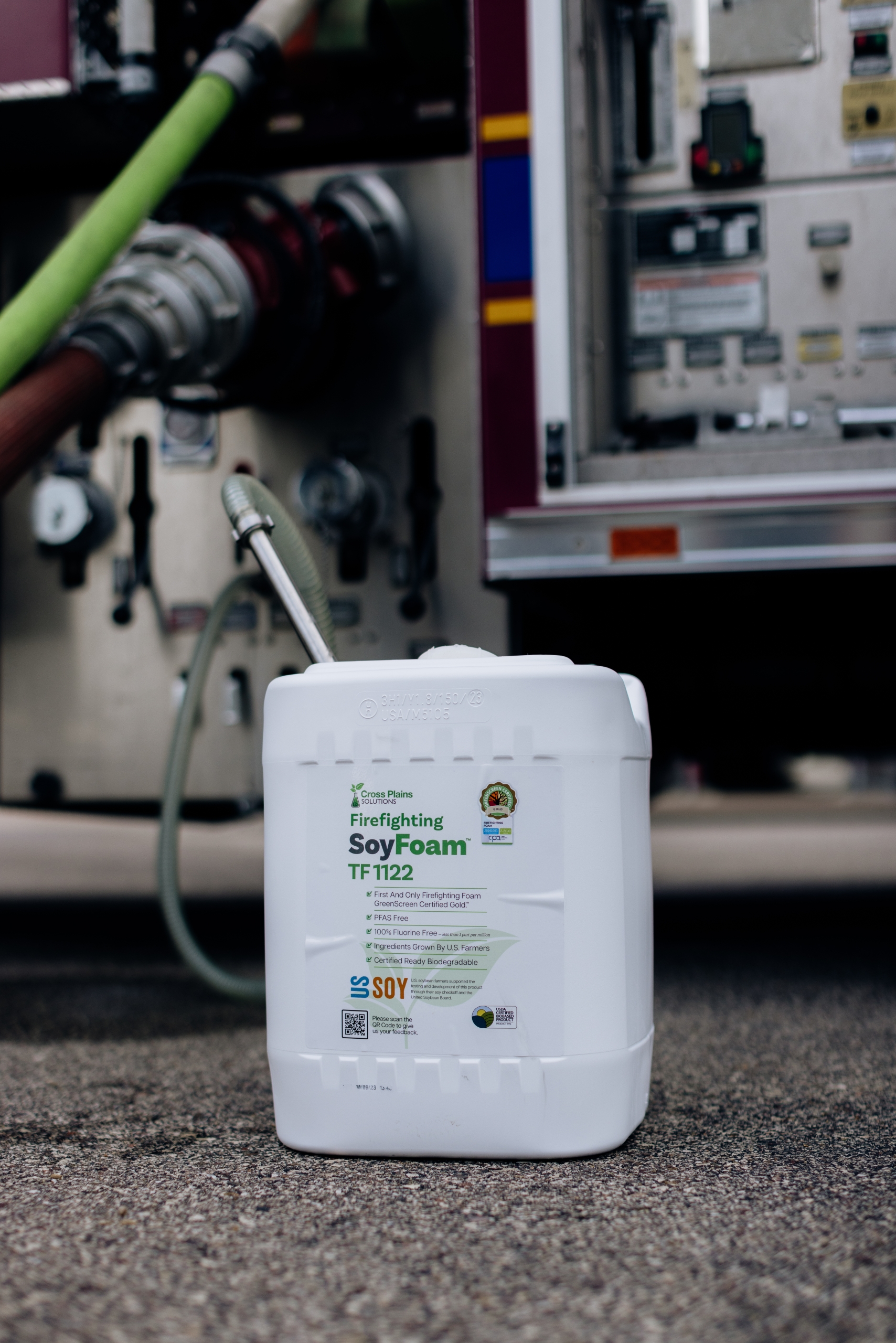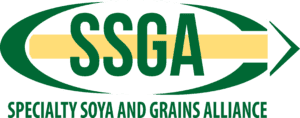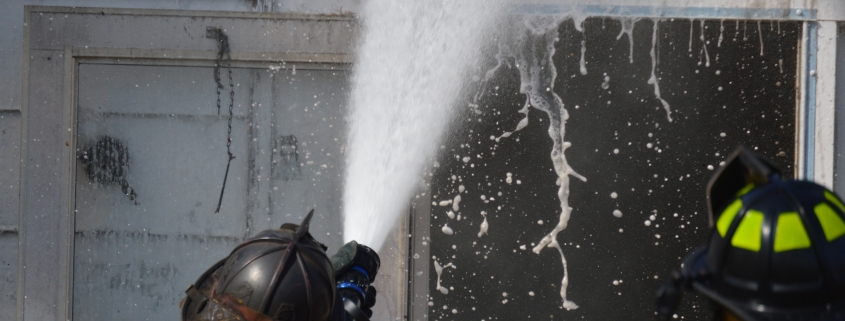‘It works’: SoyFoam is building demand, saving lives
This article was submitted by the Minnesota Soybean Research & Promotion Council as part of its Transportation Go! sponsorship. It appeared in the March-April 2025 issue of Soybean Business.
Firefighters have enough dangers to contend with.
Cancer shouldn’t be one of them.
 Firefighters have double the risk for certain types of cancer and are vulnerable to a higher percentage for many others. Overall, firefighters pose a 14% greater risk of cancer mortality than the general public. These risks can be traced back to foam-based products to curb fire spread. The most common foam used across fire departments is loaded with PFAS, aka “forever chemicals.”
Firefighters have double the risk for certain types of cancer and are vulnerable to a higher percentage for many others. Overall, firefighters pose a 14% greater risk of cancer mortality than the general public. These risks can be traced back to foam-based products to curb fire spread. The most common foam used across fire departments is loaded with PFAS, aka “forever chemicals.”
Minnesota soybeans and the soy checkoff are playing a crucial part in saving lives and improving the environment. A promising venture by Dave Garlie of Cross Plains Solutions, made possible through soy checkoff support, strives to create a safer alternative for first responders. SoyFoam is created using soy flour and can provide the same coverage as traditional foams.
“There are nine required burns, and SoyFoam can put out all nine burns,” Garlie said during a learning session at the 2025 MN Ag Expo.
The timing is critical for Minnesota. The Minnesota Pollution Control Agency (MPCA) has implemented Minnesota’s new law banning nonessential use of PFAS. The state’s new law effective Jan. 1, 2025, makes it illegal to sell or distribute some products with intentionally added PFAS in Minnesota. That follows with a statewide ban on intentionally added PFAS in products, which goes into effect in 2032.
‘Coming to fruition’
SoyFoam is created using soy flour and provides the same coverage as traditional foams. The soy-based product is the world’s only firefighting foam that is GreenScreen Certified Gold, a third-party product certification that measures a product’s health and environmental hazards.
John Hejl, a North Dakota firefighter and farmer, said his department has used test fires with his team and was impressed with the products to plug into their current systems.
“It was fantastic to use a firefighting foam where I wasn’t concerned about people standing in people’s yards,” Hejl said. “It works in every system we’ve put it in so far.”
Garlie is working with the Department of Defense and Forestry Department to gain SoyFoam approval nationwide. The product has passed Underwriter’s Laboratory standard, which is one level of safety checks for products like firefighting foam. It is currently being reformulated to fit the government viscosity requirements to move forward in the approval process. The Minnesota Soybean Growers Association is also urging lawmakers and the Walz administration to support broader use of SoyFoam in the state.
Dumont farmer Tom Frisch, who chairs the Minnesota Soybean Research & Promotional Council, is a longtime volunteer firefighter. Frisch, who also sits on the United Soybean Board’s Executive Committee, said the checkoff’s support of SoyFoam offers multiple benefits. He hopes more Minnesota fire departments will see the same value.
“Your checkoff investment is helping out the environment and the firefighters who use it,” said Frisch, a member of the Dumont Fire Department since 2000. “It’s a checkoff investment that is coming to fruition and helping build demand.”
Council Director Glen Groth attended a SoyFoam demonstration in summer 2024 alongside farmers, firefighters and Minnesota regulatory officials. He’s encouraged by its potential.
“It’s just really exciting anytime you get to see a new product being used and one that we invested our money in,” he said. “I’d really like to see it widely adopted among fire departments, and I think rural departments will be excited to use it.”
Groth donated buckets to his home department of Winona on behalf of the Council.
‘Planting to Protect’
MSR&PC has launched a county-level program encouraging local boards to donate five-gallon buckets of SoyFoam across Minnesota fire departments while highlighting soy’s value-added uses.
While the donation aspect of the campaign is set to launch this summer, a few departments have already started testing the product. Fire departments in Norman County participated in a controlled house burn and training near Ada, using SoyFoam during this training. According to firefighters who participated, the product worked “too well,” putting out the fire quickly, requiring a switch back to their standard product to prolong the process and continue the training.
“What I noticed was the wetting agent part of it, the coverage,” said Rick Loveland, Minnesota State Community and Technical College Fire/Rescue Program Manager, who participated in the demonstration. “We sprayed it on some of the bushes before we started, and those bushes didn’t catch on fire at all.”







Leave a Reply
Want to join the discussion?Feel free to contribute!